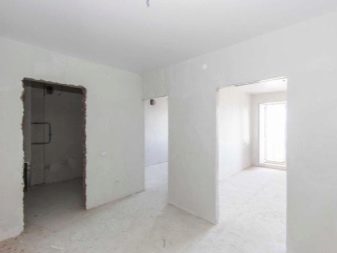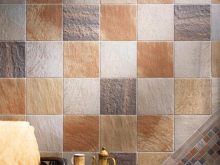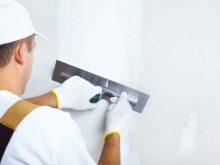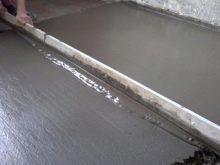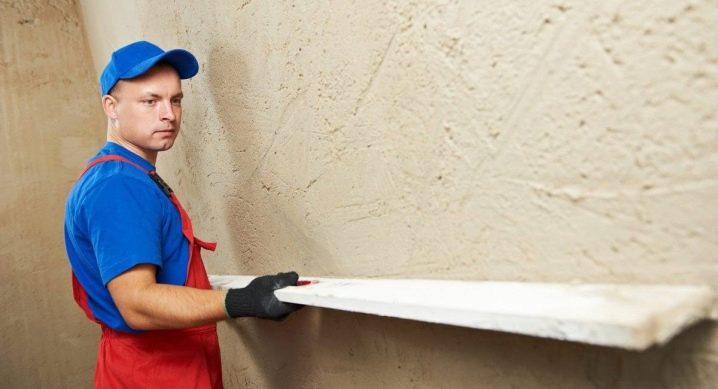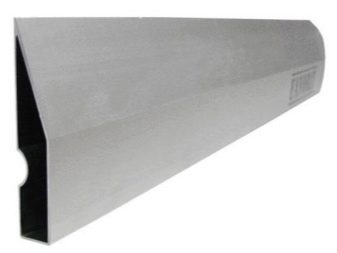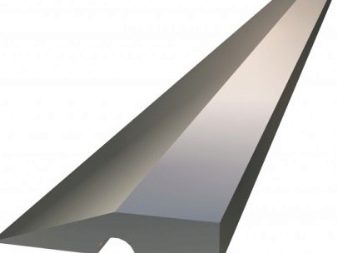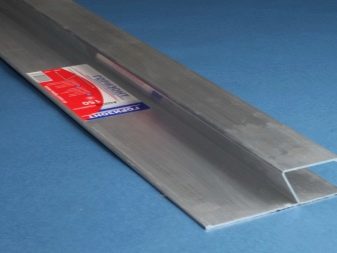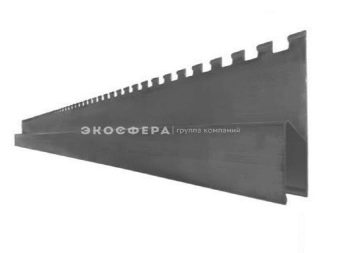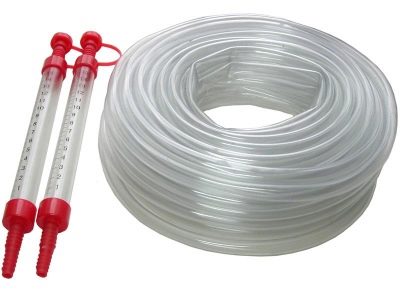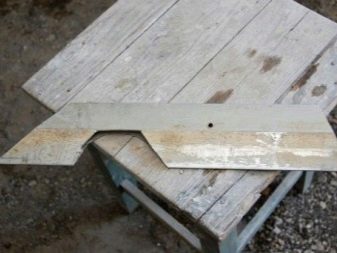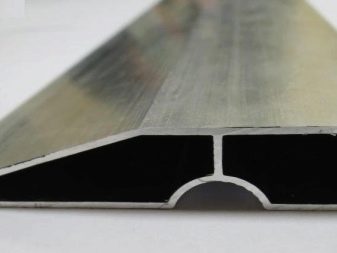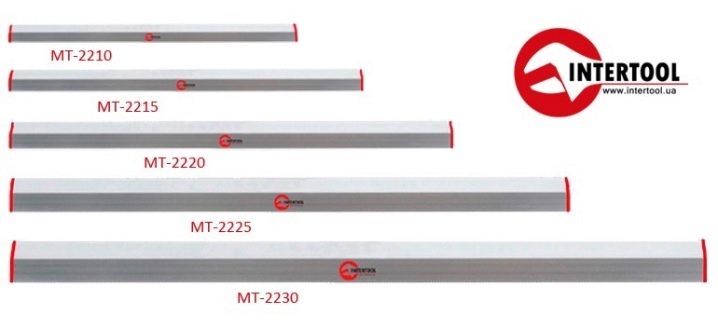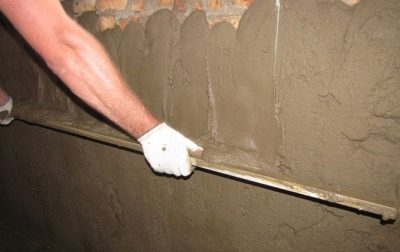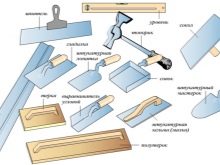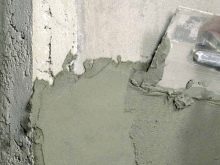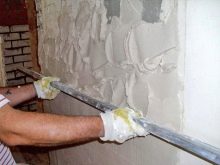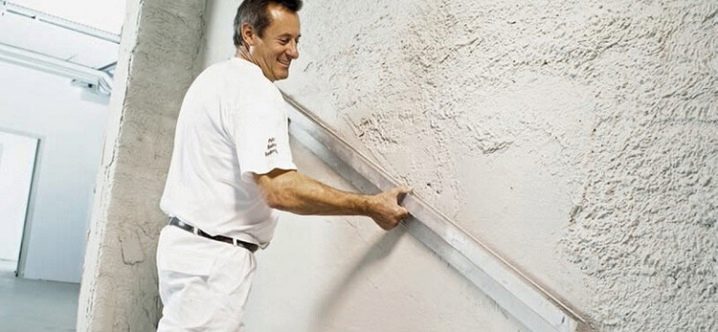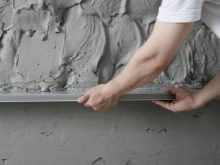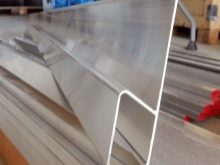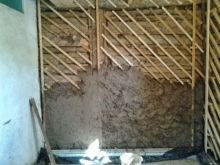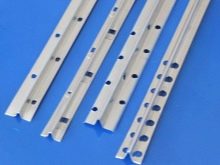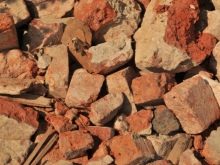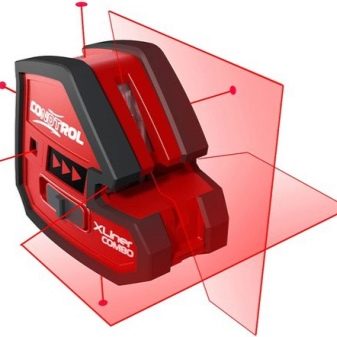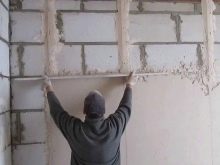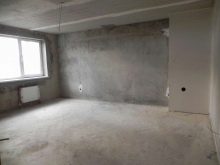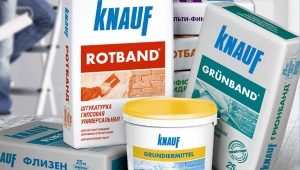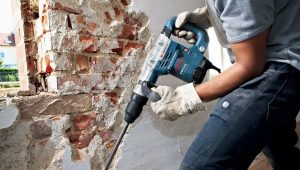Rules for plaster: types and their features
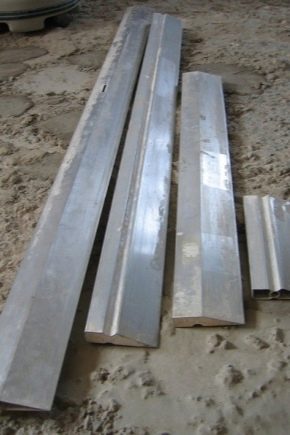
Such a tool, usually for plaster, is used to level the walls during its application. In most cases, this is a metal object with a sharp edge, with which it gets rid of excess mortar and makes the surface of the walls perfectly flat. This tool is used not only for wall leveling functions. Thanks to him, you can make other manipulations. The rules for plastering have their own types and features.
Application area
The rule is used to perform several types of work:
- Laying ceramic tiles. The rule helps to remove excess glue and properly install the tile. Moreover, its use significantly reduces the operating time.
- Processing walls putty. The tool in this type of work can be used instead of a large spatula. And it is much more convenient, because with the help of the rule you can cover large spaces.
- Leveling concrete screeds and self-leveling floors. Using the rule will allow you to process the floor faster than other devices.
- Plastering cement and plaster walls, with and without lighthouses. In these works, it is very difficult to do without a rule, with him the walls will be of high quality.
Choosing a plaster rule, you need to take into account some of the nuances: what repairs to be done, indoors or outdoors. If inside the house, then how spacious they are, and whether there are any complex architectural elements. The rules are made of different materials and differ in the type of design.
Species
Using the rule is not difficult even for an overly experienced builder. On the contrary, if the plaster is to be laid for the first time, it is better to have a rule among the necessary tools, and preferably a good quality. Depending on what the product is intended for, it has a certain shape.
In modern building stores, you can choose a rule in the form of a trapezoid and h-shaped:
- Trapezoidal Used for interior and exterior. It is popular because of its performance.This tool allows you to work with different types of plasters, including heavy cement-based. Their density is higher, and during work they require some effort so that the coating is even and uniform. In this case, the strength of the tool in the form of a trapezoid does not cause doubts among the masters. Therefore, it is chosen for facade works, when the walls and tools are under strong pressure.
- H-shaped not so durable. And well suited exclusively for interior work with the use of light types of plaster. But on the other hand, the design of this type of tool allows you to insert a level into the structure, which helps in controling whether the walls are sufficiently even and also adjust the zero point, which is usually repelled in operation.
- It also applies in some cases cog rule of The teeth also help level the plaster. Due to the grooves made with the help of the teeth, the adhesion is improved, followed by a layer of coating that will be applied to the wall. This rule is convenient when you have to apply several layers of coating on the wall.
The rule can be made from different materials. Normal is a ruler of wood. But she has one major drawback. Due to constant contact with wet coatings, it can be deformed, and this rule is no longer suitable for work. Of course, you can cover it with a special primer for wood that protects against moisture. But it is easier to use a more modern rule - aluminum. It is more durable, will last longer and weighs less.
Hydraulics can simplify work if it is built into the product.
One of the important components, which should have a rule - rigidity. In the more expensive copies there are stiffeners. This product will definitely last longer. When buying you need to carefully inspect the edge, it should be perfectly smooth. No unnecessary paint, cracks and chips should not be. All this then interfere with the work.
How long to use the product depends on the size of the room and the complexity of the walls. The rules of a meter and a half are convenient in working in small rooms, for example, corridors.
From two to three meters are good products for spacious rooms. You can quickly cover large volumes.But if a person makes all repairs alone, it is easier and more convenient for him to work with the rule of up to two meters. With greater length, the help of a partner is already needed.
If there is no rule at hand, and there is no possibility to go to the store, you can do it yourself. Self-made also help in the work. To do this, you need to take a wooden lath, oshkurit, in order not to accidentally drive a splinter, you can cover the top with a primer for wood.
Application and leveling
When the primer is completely dry, providing perfect adhesion to the surface of the material, you can begin the process of plastering the walls. It consists of three stages - spraying, primer and nakryvka:
- The first layer should not be too thick, about the consistency of sour cream.
- The primer is the second layer and is applied with a spatula or trowel.
- The solution is thrown in the form of dense blots, without sparing the plaster, it is better to have it in excess.
The next step requires a rule. Here the builder will appreciate the quality of the tool, because alignment is the most crucial moment and almost the final stage, not counting the last finishing touches.
The movement of the rule between lighthouses starts from the bottom up.After all the planned spans are passed, you need to check whether there are dents on the surface or, conversely, there are bumps. In the presence of pits need to re-throw plaster and walk the rule again to achieve a perfectly flat wall.
If there are bumps, you need to trim and clear the wall of them, then work the rule again. It is better to do all this at once, since it will be more difficult to work with dried plaster.
Important points to consider when working with the rule:
- To avoid damage to the tool, do not press it too hard against the wall when you need to cut off excess plaster. Excess solution is easily removed by the end of the tool. If you work with a wide plane, the rule will sag, and the wall will not work perfectly flat.
- In the process of work, the rule must be cleaned of adhered pieces of plaster and moistened with water. This will save you from reworking defective areas.
- After work, you need to take care of the tool. If at the moment the repair work is finished, you need to clean the tool, wash it with water, wipe dry. The frozen material will then have to be scraped off, which may lead to damage to the rule, which means that a smooth surface will not work with it.
At the final stage after complete drying of the walls, it should be checked how even they are. For this purpose, the rule is applied in different places on the surface. The absence of gaps between the rule and the surface indicates that the whole process is carried out correctly.
What are beacons for?
Lighthouses can be made of different materials and be a different design. When working with the rule, in most cases, beacons are used, which help to put plaster more efficiently and accurately.
The work uses different beacons:
- Wood the cheapest. But during intensive work with high humidity, they quickly lose their shape. They are suitable if you have to do a very small amount of work.
- Metallic The lighthouses when working as a rule are the most convenient, basically the builders use them. True, they are more expensive than wood. The minor drawbacks include the fact that they are easy to bend.
- If necessary, you can use as beacons improvised building materials - fragments of bricks, tiles, stones. In extreme cases, you can use pieces of the solution, fixing them on the surface.But this is more likely in the business premises.
Before installing the beacons, the walls are inspected using a level, an ideal point is found, and screws are screwed in for the even installation of the beacons.
Facilitates the work with the rule of construction laser. A line is drawn on the rule with a simple pencil. The laser should be set so that it retreats from the ideal point by the distance of the length of the rule.
Lighthouses after plastering walls need to be removed. Some do not want to bother with this work, and this is wrong. This is especially true of wood products. Over time, they can just ruin the wall.
Practice shows that the rule is a necessary tool for repairs. If you take into account all its features when choosing and buy the right option, plaster walls will be simple and convenient, and the walls will be smooth, smooth and beautiful.
In the next video you are waiting for the installation of beacons and plastering walls with the help of h-rules.

